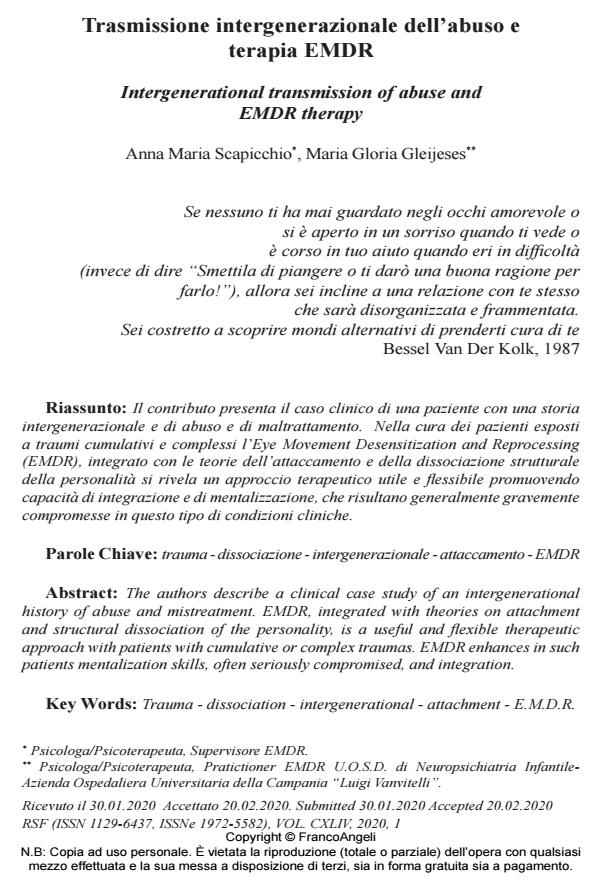Intergenerational transmission of abuse and EMDR therapy
Journal title RIVISTA SPERIMENTALE DI FRENIATRIA
Author/s Anna Maria Scapicchio, Maria Gloria Gleijeses
Publishing Year 2020 Issue 2020/1
Language Italian Pages 12 P. 79-90 File size 170 KB
DOI 10.3280/RSF2020-001006
DOI is like a bar code for intellectual property: to have more infomation
click here
Below, you can see the article first page
If you want to buy this article in PDF format, you can do it, following the instructions to buy download credits

FrancoAngeli is member of Publishers International Linking Association, Inc (PILA), a not-for-profit association which run the CrossRef service enabling links to and from online scholarly content.
The authors describe a clinical case study of an intergenerational history of abuse and mistreatment. EMDR, integrated with theories on attachment and structural dissociation of the personality, is a useful and flexible therapeutic approach with patients with cumulative or complex traumas. EMDR enhances in such patients mentalization skills, often seriously compromised, and integration.
Keywords: Trauma - dissociation - intergenerational - attachment - E.M.D.R.
Anna Maria Scapicchio, Maria Gloria Gleijeses, Trasmissione intergenerazionale dell’abuso e terapia EMDR in "RIVISTA SPERIMENTALE DI FRENIATRIA" 1/2020, pp 79-90, DOI: 10.3280/RSF2020-001006